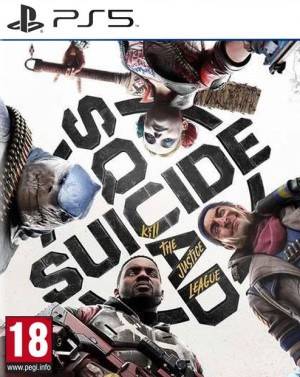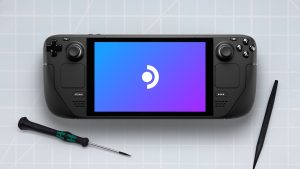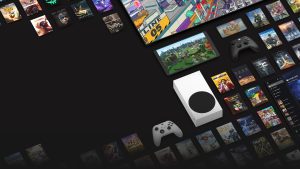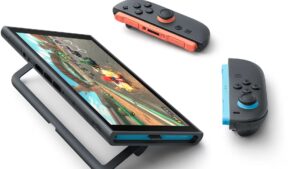
Rocksteady Games has built a strong reputation for itself on the back of the Batman Arkham games, and the developer has tried to take those concepts to the next level with Suicide Squad: Kill the Justice League. This co-op third-person shooter can be a decently fun time, but it doesn’t quite stick the landing due to a bevy of bad design decisions and other miscellaneous annoyances.
But the one aspect where Suicide Squad: Kill The Justice League does manage to impress is the visuals. Built using Epic’s Unreal Engine, Suicide Squad flaunts some high production values in its environments and character models – but what’s actually running under the hood? How does it leverage the power of ninth-gen machines and how does the game scale across different platforms?
With this technical analysis, we try to answer these questions, break down individual aspects of the game, and assess them with a critical eye along with performance profiling across both PC and PS5.
Game Engine
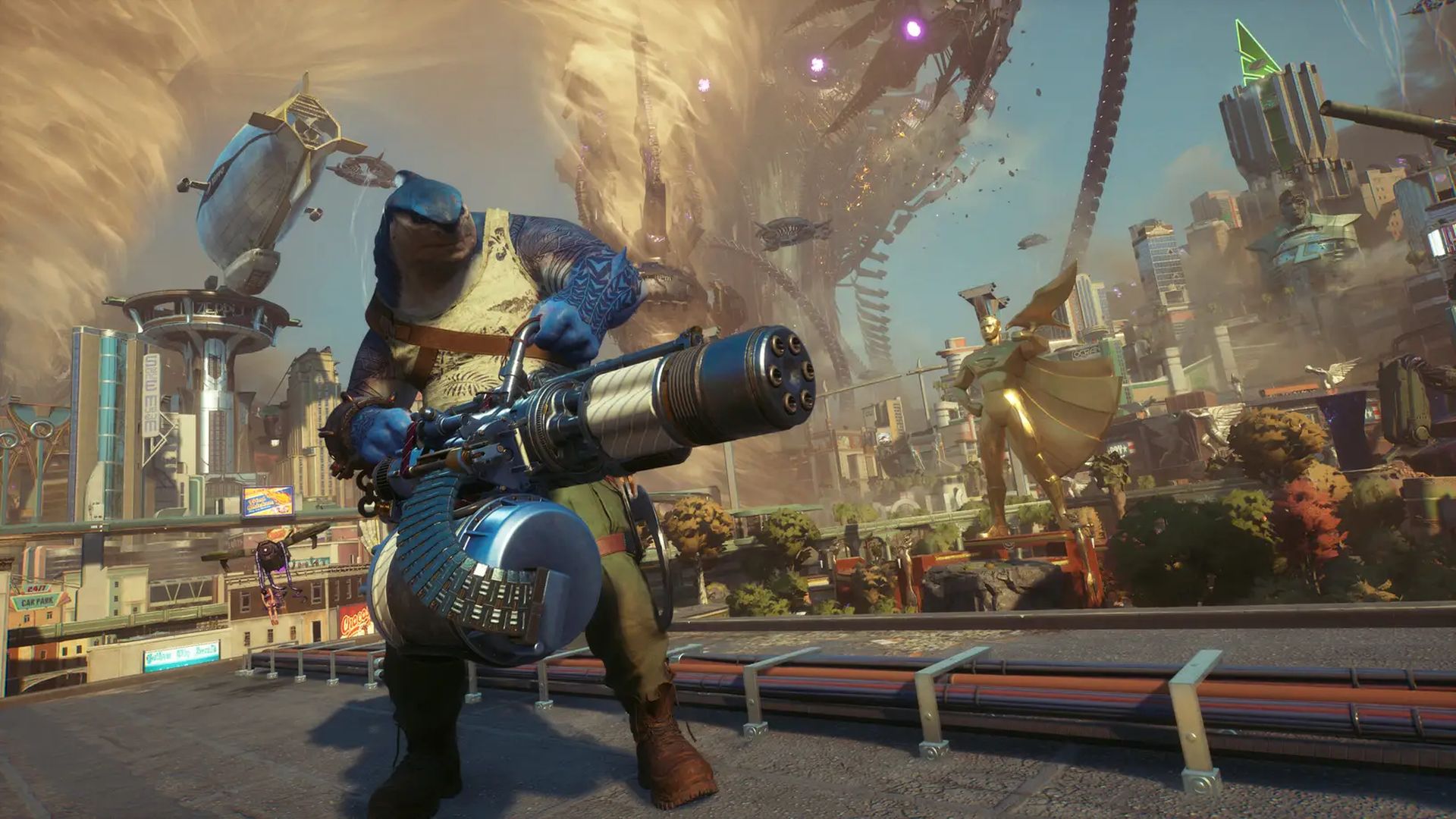
As mentioned previously, Suicide Squad: Kill The Justice League is using Epic’s Unreal Engine to render its rendition of Metropolis. More precisely, it’s using Unreal Engine 4 which might come as a surprise considering that it’s exclusive to current-gen consoles – but the team seems to have made good use of the available features to craft a visually competent current-gen experience.
The decision to go with Unreal Engine 4 instead of 5 also helps in keeping the baseline a bit lower, which should make for a more optimized experience across a wide variety of PC specifications. Everything from the world streaming tech to character models and post-processing effects looks pretty competent from a ninth-generation perspective despite being based on an older version of the engine.
Character Models
Suicide Squad: Kill The Justice League features some highly detailed character models that flaunt some pretty high polycounts. The skin meshes are beautifully complex, and the clothes that these characters don are also comprised of physically based materials that react appropriately to light and sway with your swift movements.
Characters like King Shark flaunt some impressive detail on the material side of things. The hair physics implementation isn’t anything spectacular, but the rendering of the hair itself is pretty great with impressive levels of hair density per model. You can obviously notice artifacts along the fine edges if you really zoom in on the details, but overall – the character models look really good from a visual standpoint.
Similar quality efforts seem to have been put in the animations department as well, where we get to see some excellent translation of the actors’ motion captures to the in-game character models. The skin meshes react to the movement of lips and eyebrows, and the actor’s subtle movements look pretty crisp in cinematics as well.
Environments
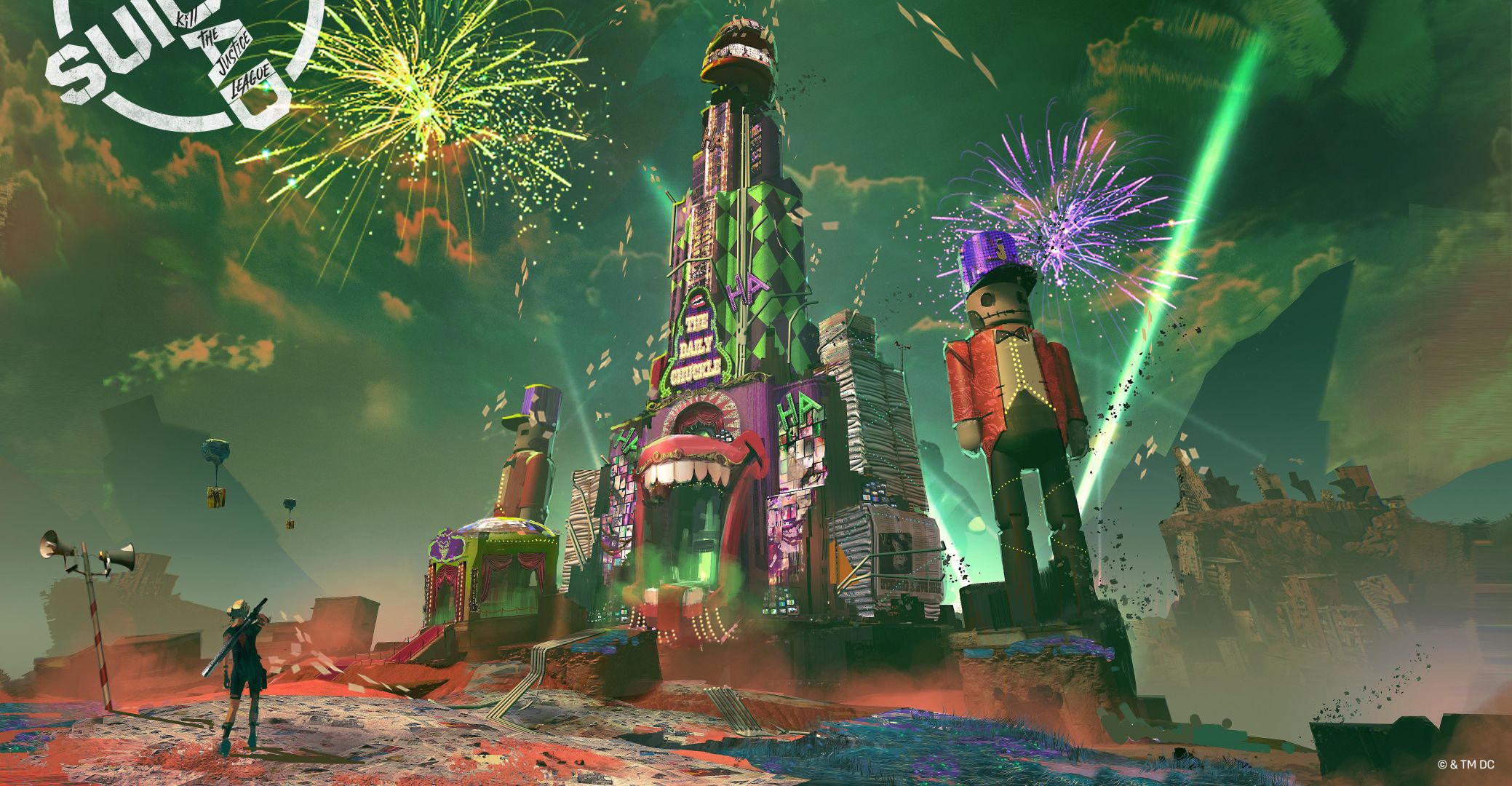
Like any other game of this ilk, the macro-level detail of the open world is just as important as the attention that’s gone into the micro level of the presentation. In the case of Suicide Squad: Kill The Justice League, the open world does look stunning from a visual perspective – but it just doesn’t have the substance to make players want to explore each nook and cranny of this huge map but that’s beside the point of this discussion.
On a technical level, the assets used throughout the environments are of pretty high quality. Whether it is the numerous buildings peppered throughout the map or the grass on the occasional rooftop garden or the cobbled roads, Suicide Squad has some great-looking assets that react to light and cast detailed shadows in an appropriate fashion.
As for the world streaming, Rocksteady makes great use of the increased memory of current-gen consoles to render huge chunks of the map at once. The draw distance is pretty high, and the level of detail across distant objects is also really good which is perhaps why we get to see such scant usage of volumetric fog to portray a sense of scale within the world. Level of detail swapping also works pretty well, and we didn’t notice any pop-in or other signs of artifacting in our test across both platforms.
Lighting And Reflections
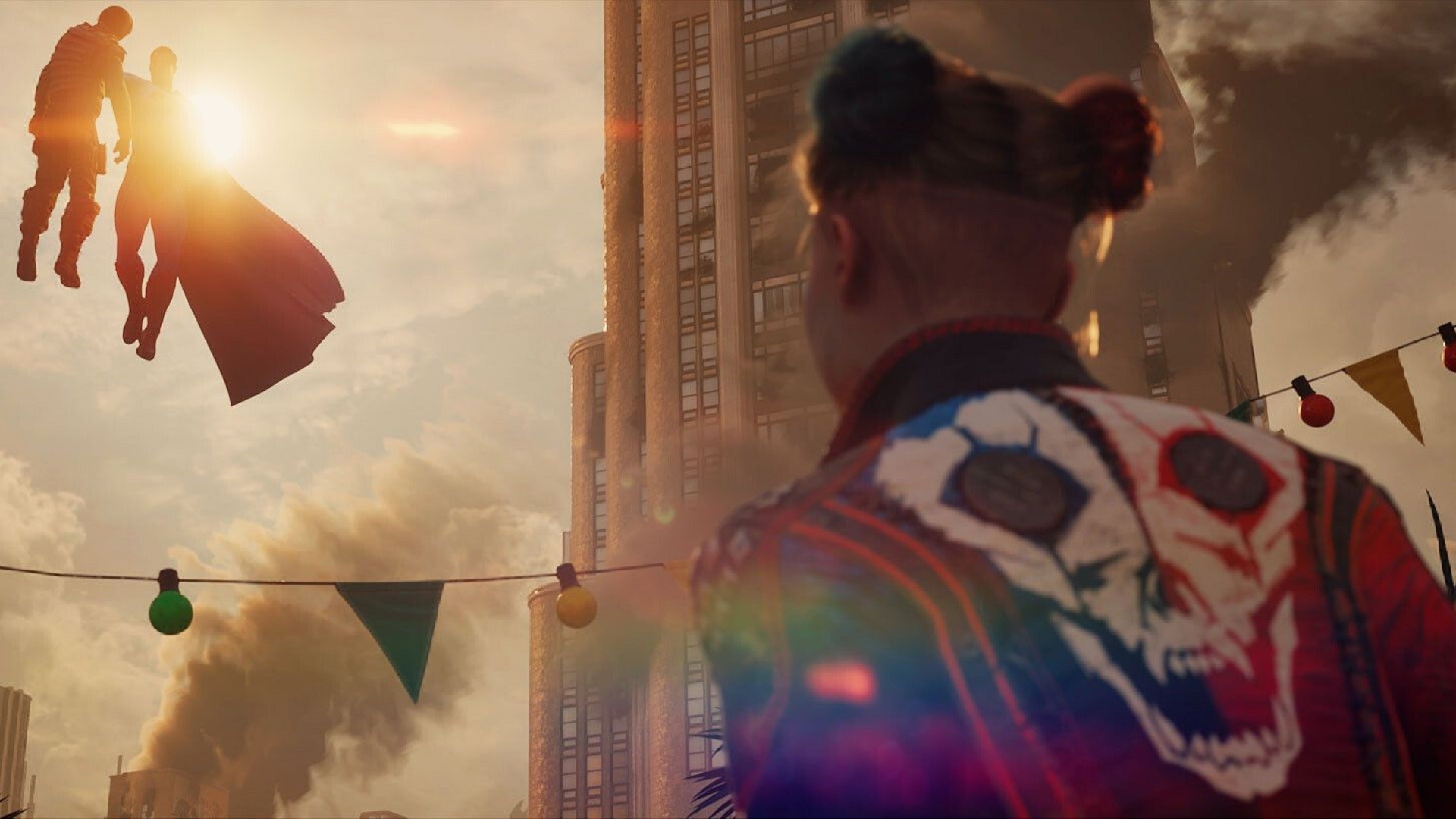
Switching gears to the lighting, Suicide Squad: Kill The Justice League doesn’t seem to be using ray tracing for the global illumination on the PS5 version. Instead, it seems to be utilizing some form of screen space global illumination to light up its scenes which works well enough for the most part. Indirect lighting is pretty rudimentary as a result, but it doesn’t really matter much amidst the heat of constant battle.
The same story continues over to the reflections side of things as well, where we get to see a screen space-styled implementation on consoles. Reflections also update in sync with the framerate, and they look pretty good in action.
Furthermore, the intensity of the reflections also depends on the material on which it is cast – so rougher materials like concrete wouldn’t obviously reflect their surroundings with the same precision as, say, glass panes lined throughout a building. Suicide Squad also seems to be using additional cinematic lights during gameplay which add a bit of depth to the scenes and the extra shadows that are cast from these lights help in really bringing out the detail that’s present within the character models.
PC Settings and Test Bench Specifications
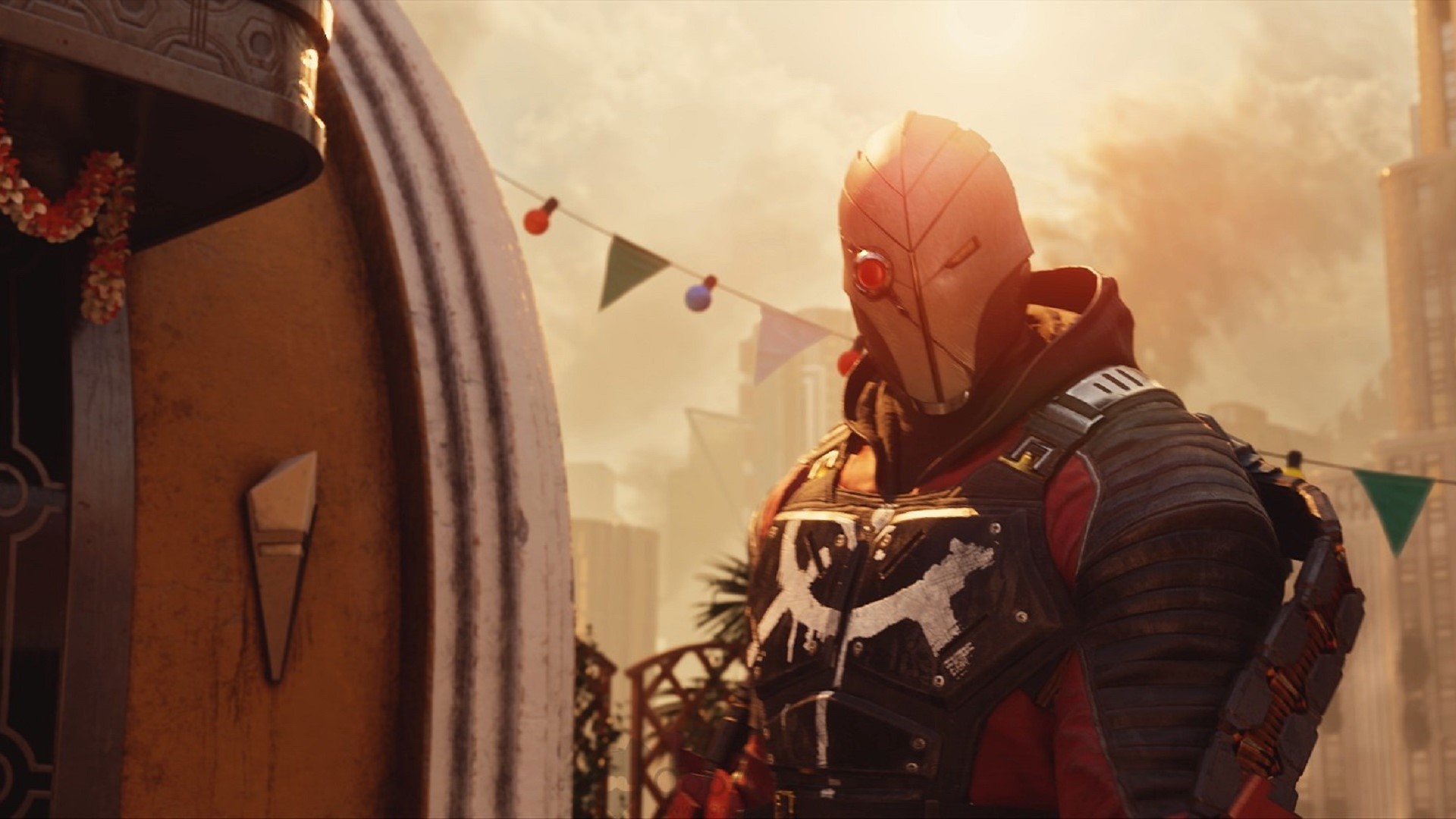
In addition to the PS5 version, we also took some time to test Suicide Squad: Kill The Justice League on PC. Our test bench consists of an AMD Ryzen 9 5950X, Nvidia RTX 308Ti, and 32 GB of RAM which is well over what the game recommends.
Briefly taking a look at the settings menu, we have a pretty barebones presentation where you have a dozen or so sliders ranging from shadow quality to upscaling and reflections among others. It doesn’t show any comparison screenshots or the setting’s impact on system memory – so it definitely leaves a bit to be desired.
That being said, Suicide Squad does feature support for modern upscaling techniques like DLSS and FSR2 – so it comes with all the essential features and sliders but nothing more than that. Given our test specs, we were able to turn the game’s settings all the way up to high with ray-traced reflections turned on, and we ran the game at 4K with DLSS turned on.
Differences Between PC And PS5 Versions
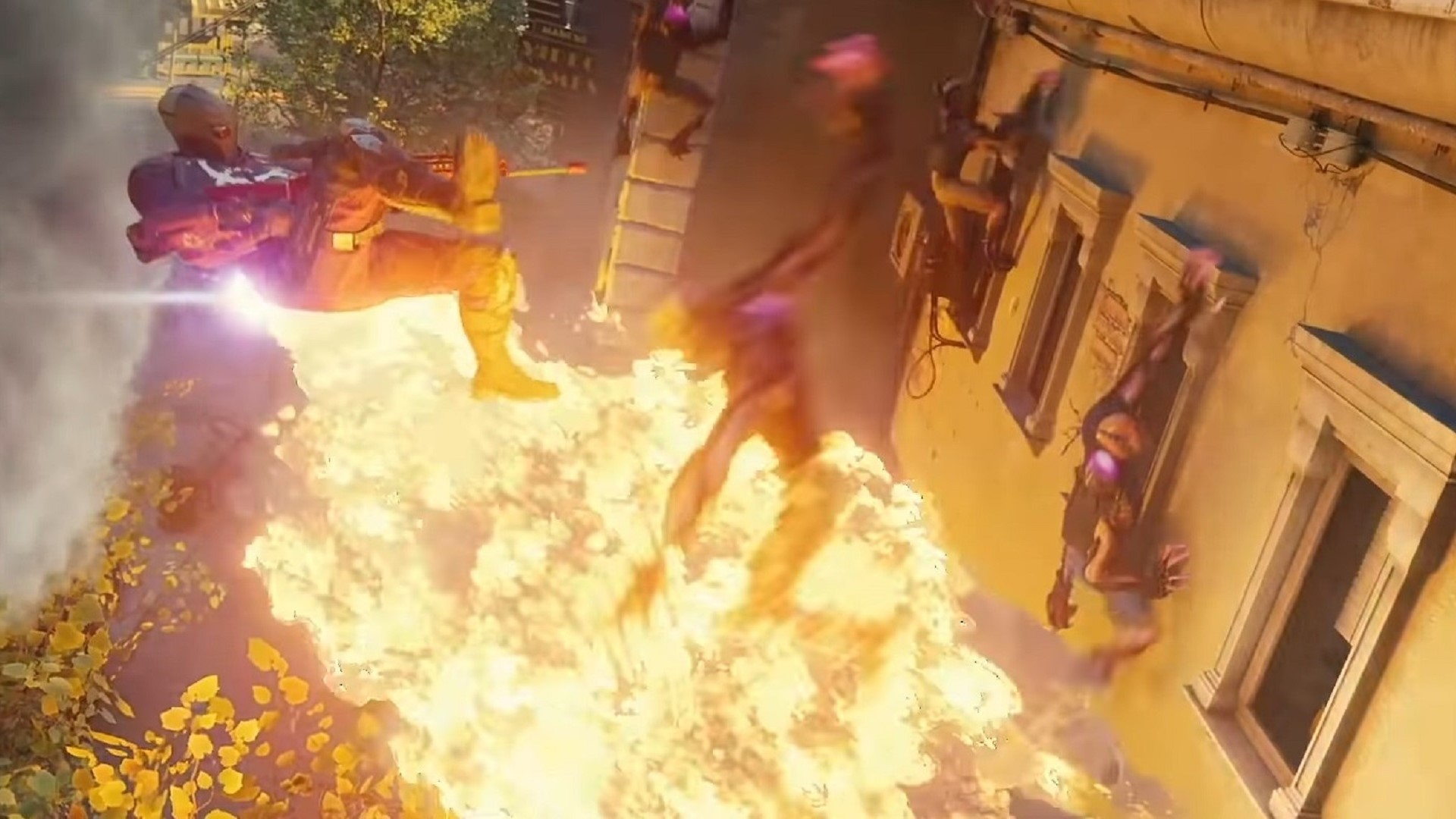
Suicide Squad retains the same base presentation across both PC and PS5, but the ray tracing on PC helps in creating more realistically lit scenes, and indirect reflections look much better as a result. Asset quality is mostly the same across both platforms, but the PC version looks crisper which might be a result of DLSS’ superior upscaling as compared to what seems like an FXAA or TAA-based solution on the PS5.
Draw distance, particle effects, and character models exhibit the same level of detail across both platforms, so there isn’t too big of a difference between both versions. That said, it is pretty weird that Suicide Squad on PS5 doesn’t have any graphics modes to choose from; there’s just a standard 60fps performance mode and that’s it.
Performance, Loading Times And Conclusion

As mentioned previously, the decision to go with Unreal Engine 4 instead of 5 gives quite the benefit for performance – and we are happy to report that Suicide Squad performs pretty well across both of our test platforms. The PS5 version is able to hold its framerate in a solid fashion, and while there are occasional dips here and there – it’s a pretty consistent experience for the most part. Even on PC, we kept VSync on and the game was able to chug along smoothly even during intensive encounters.
As for the loading times, the game takes about 10 seconds to load a save on our PS5 – which isn’t too long but isn’t too impressive either. We saw similar results on the PC which also took about 13 to 14 seconds to queue in with bots and load into a save – which does make me suspect that the developer has probably not optimized the game for PS5’s SSD or Windows DirectStorage API.
In conclusion, Suicide Squad: Kill The Justice League is a great looking game that makes good use of Epic’s Unreal Engine 4 to craft visually appealing open-world and realistic character models.








